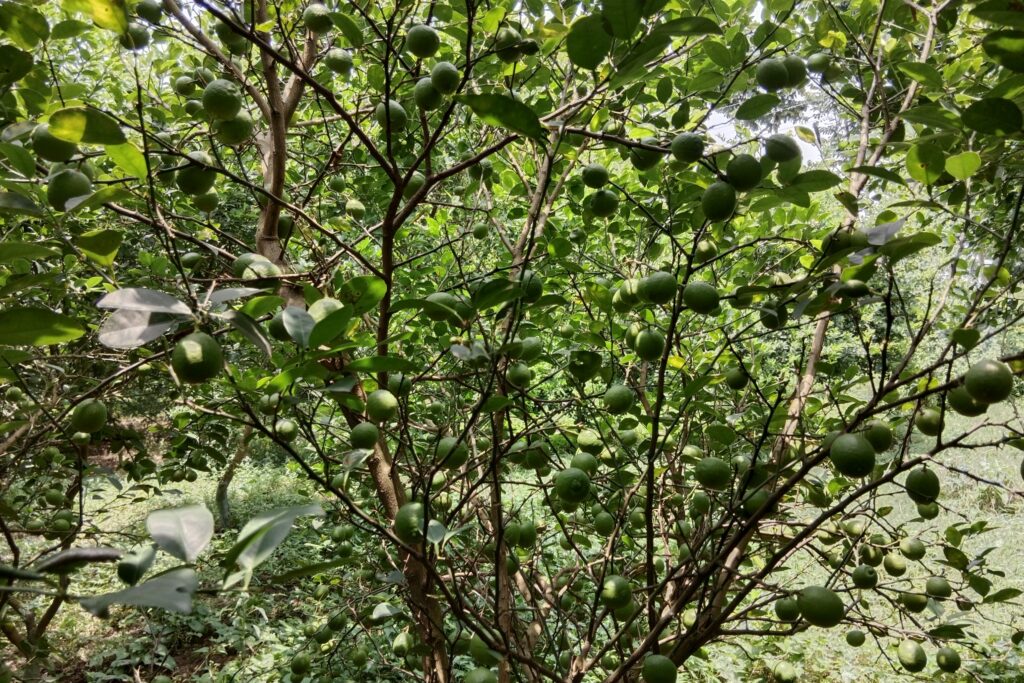Introduction
Strawberries are in demand year-round, often consumed fresh, and widely used in the food industry. They are rich in antioxidants, making them an important part of daily nutrition. To maximize your strawberry harvest and produce luscious fruit, it’s crucial to provide balanced strawberry fertilizer.

Strawberries thrive in rich soil, which is why gardeners often add compost or aged manure before planting. These amendments, mixed into the top few inches of soil, gradually release nutrients, supporting the plants throughout their growth. Fertilization significantly impacts strawberry yield and quality, enhancing the color, sugar content, and dry matter of the fruit.
Proper irrigation is essential for high-yield strawberry production due to the plant’s shallow root system. Frequent, short irrigation pulses help maximize production. While nitrogen is vital for runner and fruit development, excessive nitrogen can harm root growth and flower development. Runner thinning can help regulate nitrogen and phosphorus nutrition. Additionally, strawberries are particularly sensitive to salinity, especially chloride, which must be carefully managed.
Why Fertilizer is Crucial for Strawberries
Strawberries demand more care than many other fruits, needing a nutrient-rich setting to yield large, tasty berries. Fertilizers supply vital nutrients that the soil might lack, such as nitrogen, phosphorus, potassium, and various micronutrients.
8 Best Strawberry Fertilizers
Research shows that organic fertilizers outperform chemical ones in strawberry cultivation, enhancing fruit yield, quality, soil fertility, and economic benefits. Strawberries thrive with high organic matter in the soil, making the use of organic fertilizers highly recommended.
Chicken Manure
Chicken manure, which is rich in the macro plant nutrients nitrogen, phosphorus, and potassium, is generally used in agricultural production to meet the nitrogen needs of plants, as well as to improve soil health by increasing product yield, the amount of organic matter, and water holding capacity, while at the same time providing plant nutrients in the soil via the slow release of plant nutrients, allowing them to be taken in more effectively by plants.
Apply well-composted chicken manure @ 8–10 MT/ha, a few weeks before.
Bonemeal
Bonemeal is a calcium and phosphorus-rich organic fertilizer. It is perfect for crops that bear fruit and bloom, such as strawberries, because it encourages robust root development and flowering in plants. Bone meal enhances the fertility and structure of the soil, which benefits plant health by improving nutrient uptake. Because of its slow release, it gradually supplies a constant amount of nutrients. Furthermore, bone meal promotes sustainable farming methods and is good for the environment. Usually, it is added as a side dressing during the growing season or mixed into the soil before planting.
Bonemeal supports root growth and encourages flowering.
Azotobacter
Azotobacter plays a crucial role in strawberry farming by fixing atmospheric nitrogen in the soil and enhancing its fertility. This nitrogen-fixing bacterium promotes plant growth, increases yield, and improves fruit quality. Azotobacter also produces growth-promoting substances, like vitamins and phytohormones, which further boost plant health and resistance to diseases.
Apply @ 2 g / plant.
Apply at the time of planting.
Phosphorus Solubilizing Bacteria (PSB)
Phosphorus Solubilizing Bacteria (PSB) are vital in strawberry farming as they convert insoluble phosphorus in the soil into forms accessible to plants. This process enhances the availability of phosphorus, a critical nutrient for root development, flowering, and fruiting in strawberries. PSBs produce organic acids and enzymes that release phosphorus from soil particles, improving nutrient uptake and plant growth. Their application reduces the need for chemical phosphorus fertilizers, promoting sustainable and eco-friendly farming practices. By improving phosphorus availability, PSBs help increase strawberry yield, quality, and overall plant health, leading to more productive and resilient crops.
Apply @ 2 g / plant.
Apply at the time of planting.
Nitrogen(N)
Nitrogen helps the plant grow leaves and runners, but if you add it before or during harvest in medium or heavy soil, it can lower the fruit quality. Nitrogen is important because it helps make enzymes and amino acids, which are needed for building all parts of the plant cells.
Using calcium nitrate with potassium nitrate gives better results than using ammonium-based fertilizers without extra calcium.
Nitrogen is the most crucial nutrient for crop production due to its role in cell division. Lack of nitrogen can reduce crop yield and quality.
Nitrogen affects the firmness, quality, and shelf life of strawberries.
Apply @ 0.9 g / plant at planting and then at one one-month interval.
Phosphorus (P)
Phosphorus (P) is crucial for photosynthesis and is needed after the plants emerge.
Phosphorus is an important nutrient for the growth, health, and strength of strawberry plants. When there’s not enough phosphorus, the leaves turn dark green because the leaf area shrinks, increasing chlorophyll concentration per unit area.
However, too much phosphorus can make the shoots smaller, cause the leaves to turn yellow, and lower the levels of iron (Fe) and zinc (Zn) in the plant tissues.
Phosphorus and potassium are vital for strawberries. Phosphorus supports flowering, while potassium helps develop quality fruit and strengthens the plant against diseases.
Apply @ 2.1 g/ plant at planting and then at a month interval.
Potassium (K)
Strawberries require a significant amount of potassium during their fruit development phase. Potassium is vital for plant growth as it aids in cell elongation, regulates water within the plant, and facilitates carbohydrate production. Adequate potassium levels in strawberries lead to higher sugar production, resulting in sweeter fruits. Therefore, ensuring sufficient potassium is crucial for optimal fruit quality.
When planting strawberries, it is important to apply both phosphorus and potassium generously. These nutrients are essential for disease resistance and the robust growth of roots and stems, with phosphorus playing a particularly crucial role in fruit development. Potassium, in particular, enhances fruit quality by increasing total soluble solids and ascorbic acid, thereby improving the aroma, taste, color, and firmness of the fruits. Strawberries require high amounts of potassium during fruit development.
Apply @ 1.67 g / plant at planting and then at one one-month interval.
Calcium & Boron
Fruit firmness is mostly influenced by the strength and thickness of its cell walls, both of which are enhanced by calcium. Additionally, it is essential for initiating signaling pathways that affect a plant’s ability to grow, develop, and respond to a variety of challenges, such as pathogen attacks. Calcium also increases the efficiency of nitrogen use. Strawberry plants with low calcium soils have wrinkled leaf blades, blackened, unexpanded tips burn, and freckled leaf and flower stalks that frequently leak syrup and collapse. These plants produce hard, acidic fruits that coat themselves in a thick layer of achenes.
The incidence of albinism and grey mold in the fruits of strawberry plants is greatly reduced by spraying them with calcium or a calcium and boron combination. The overall quality of fruit is improved by the efficient reduction of these illnesses with pre-harvest foliar spray of calcium and boron. The preservation of cell wall integrity by calcium also contributes to the extension of fruit storage life through the augmentation of resistance against postharvest pathogens or the reduction of susceptibility to postharvest illnesses.
Because calcium helps plants grow and prolongs the post-harvest life of strawberries, it has been proposed as a fungicide substitute for managing diseases in plants. It has been discovered that applying a 200-ppm calcium spray helps to achieve these results. This method improves the general health and output of the strawberry plants in addition to aiding in the management of illnesses.
Method of Application
Strawberries are short-lived perennials that grow from shallow-rooted crowns. They mature quickly and produce runners that develop into new crowns.
- For granular fertilizers, evenly sprinkle them around the base of the plants and lightly work them into the soil. This helps ensure the nutrients are absorbed effectively.
- When using liquid fertilizers, mix them according to the package instructions and water the plants thoroughly. Make sure the solution reaches the root zone for optimal nutrient uptake.
- Foliar sprays should be applied directly to the leaves for quick nutrient absorption. This method is particularly useful for supplying micronutrients like magnesium.
FAQs
Q1. How to grow bigger strawberries?
Follow the following:
- Plant them first in rich, well-draining soil enriched with well-decomposed poultry manure.
- Provide strawberry plants with at least 6 to 8 hours a day of direct sunlight.
- Apply the well-balanced fertilizer mentioned above in the article.
- Avoid waterlogging by irrigating often and evenly to maintain a constant moisture level.
- Mulch around your plants to keep the moisture in and keep weeds out.
- Remove runners regularly to focus the plant’s energy on yielding fruit.
- Use the proper organic remedies to keep pests and diseases away from strawberries.
- To avoid fungal problems, adequate air circulation should be there around the plants.
Q2. Are eggshells good for strawberry plants?
For strawberry plants, the use of crushed eggshells has benefits. Crushed eggshells provide a natural source of calcium, which helps strengthen the plant’s cell walls and promotes healthy growth. Blossom end rot is another typical problem in fruiting plants that calcium helps avoid. Eggshells may help in improving drainage and soil structure. Eggshells can be crushed into small bits and added to soil or scattered around the base of plants. Eggshells are a flexible and sustainable addition to your strawberry patch because they improve the soil and keep pests like slugs and snails away.
Q3. What season do strawberries grow best in?
Spring (March) and early summer are the greatest seasons for strawberry growth. These are the best seasons for their growth and fruiting since they thrive in temperatures between 15 and 27°C. When strawberries are planted early in the spring, they have time to form roots before the warmer weather promotes flowering and fruit growth. Strawberries are also suitable for fall planting for a spring harvest in areas with moderate winters. For the best growth, soil that drains properly, regular rainfall, and enough sunshine are essential. Steer clear of severe heat waves and freezing temperatures, which can harm plants and reduce fruit yield.



Pingback: The Ultimate Guide to Strawberry Farming. -